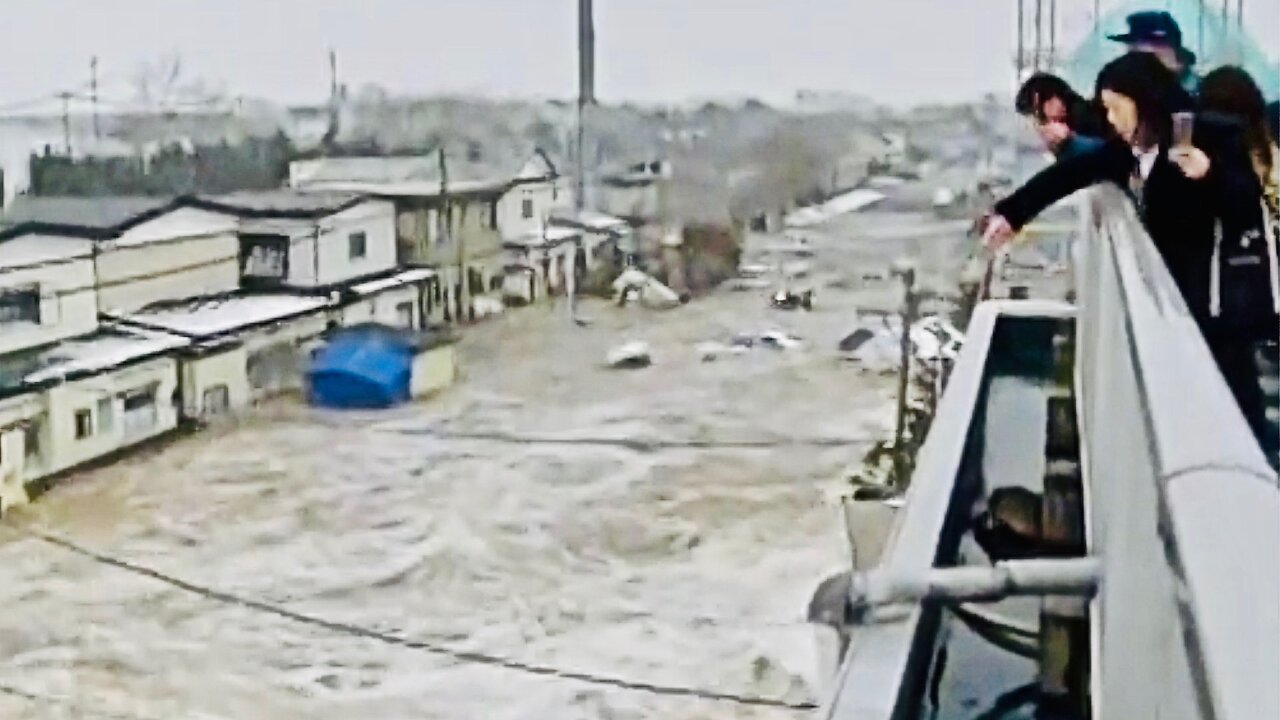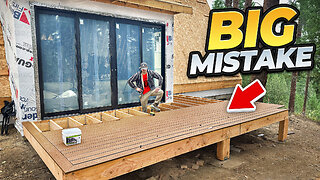Premium Only Content

No Escape Nerve Racking Flood Build Up Traps Shocked People On Roof - Japan Tsunami
Japan 2011 Earthquake Tsunami - On March 11, 2011, a magnitude-9 earthquake shook northeastern Japan, unleashing a savage tsunami. The effects of the great earthquake were felt around the world, from Norway's fjords to Antarctica's ice sheet. Tsunami debris continues to wash up on North American beaches years later. The unexpected disaster was neither the largest nor the deadliest earthquake and tsunami to strike this century. That record goes to the 2004 Banda Aceh earthquake and tsunami in Sumatra, a magnitude-9.1, which killed more than 230,000 people. But Japan's one-two punch proved especially devastating for the earthquake-savvy country, because few scientists had predicted the country would experience such a large earthquake and tsunami.
Japan's scientists had forecast a smaller earthquake would strike the northern region of Honshu, the country's main island. Nor did they expect such a large tsunami. But there had been hints of the disaster to come. The areas flooded in 2011 closely matched those of a tsunami that hit Sendai in 869. In the decade before the 2011 Tohoku earthquake, a handful of Japanese geologists had begun to recognize that a large earthquake and tsunami had struck the northern Honshu region in 869. However, their warnings went unheeded by officials responsible for the country's earthquake hazard assessments. Now, tsunami experts from around the world have been asked to assess the history of past tsunamis in Japan, to better predict the country's future earthquake risk.
"For big earthquakes, the tsunami is going to be the big destructive factor," said Vasily Titov, director of the National Oceanic and Atmospheric Administration's Center for Tsunami Research in Seattle, Washington. "But if the nation is prepared, warning and education definitely saves lives. Compare the human lives lost in Sumatra and Japan. It's about 10 times less."
The 2011 Tohoku earthquake struck offshore of Japan, along a subduction zone where two of Earth's tectonic plates collide. In a subduction zone, one plate slides beneath another into the mantle, the hotter layer beneath the crust. The great plates are rough and stick together, building up energy that is released as earthquakes. East of Japan, the Pacific plate dives beneath the overriding Eurasian plate. The temblor completely released centuries of built up stress between the two tectonic plates, a recent study found.
The March 11 earthquake started on a Friday at 2:46 p.m. local time (5:46 a.m. UTC). It was centered on the seafloor 45 miles (72 kilometers) east of Tohoku, at a depth of 15 miles (24 km) below the surface. The shaking lasted about six minutes. [Infographic: How Japan's 2011 Earthquake Happened]
Scientists drilled into the subduction zone soon after the earthquake and discovered a thin, slippery clay layer lining the fault. The researchers think that this clay layer allowed the two plates to slide an incredible distance, some 164 feet (50 meters), facilitating the enormous earthquake and tsunami.
Music: The Takeover by Dhruva Aliman
Amazon - https://amzn.to/2B9tGa7
https://music.apple.com/us/artist/dhruva-aliman/363563637
https://dhruvaaliman.bandcamp.com/album/road-of-fortunes
http://www.dhruvaaliman.com/
Spotify - https://open.spotify.com/artist/5XiFCr9iBKE6Cupltgnlet
-
 49:45
49:45
Knowledge Land
10 months agoFuture War Technology - Armies of Tomorrow
398 -
 3:25
3:25
KIVI
2 years agoRadio Boise is giving people an escape
21 -
 3:59:18
3:59:18
GamerGril
13 hours agoPAGING ALL ZOMBOIZ | DEAD ISLAND 2
95.2K14 -
 42:24
42:24
MYLUNCHBREAK CHANNEL PAGE
20 hours agoA Century Gone
132K64 -
 38:22
38:22
Stephen Gardner
14 hours ago🔥HOLD ON! The RUMORS about Kamala are TRUE...
175K494 -
 1:22:44
1:22:44
Michael Franzese
1 day agoWill Trump’s Win Finally Convince Democrats to Stop The Woke Nonsense??
163K128 -
 8:27:07
8:27:07
MDGgamin
17 hours ago🔴LIVE- Rumble Gaming To The MOON - Variety of Games & Chatting - #RumbleTakeover
143K5 -
 27:24
27:24
Mr. Build It
5 days agoDECK DISASTER! How We Fixed a Botched Build
110K16 -
 26:58
26:58
barstoolsports
18 hours agoZach Bryan Blocks All of Barstool | Stool Scenes
121K17 -
 1:06:44
1:06:44
Talk Nerdy 2 Us
1 day ago🔥 Hackers vs. The World: From Amazon breaches to FBI-confirmed Chinese telecom spying
112K22